Хаас за Мексико
Ромен Грожан:
After a 22-year absence, Formula One returned to Mexico last year. What was the atmosphere like for that race?
It was a great atmosphere. During the driver parade, I don’t think I’d ever seen such a big crowd than in the last part of the circuit at the stadium section. It was an awesome race with a lot of fans.
You finished 10th in last year’s race to begin a three-race streak of top-10s to end the season. Talk about your performance at last year’s Mexican Grand Prix and how it seemed to set the stage for a strong close to the season.
I wasn’t really happy with the race in Mexico last year. I managed to get into the top-10, but I thought with the performance we could have done better. We were struggling with the brakes because of the altitude, which cost us a little bit. But yes, it was a great end to the season and I managed to score points in the last three races. I’m hoping for the same this year.
Last year’s race at the Autodromo Hermanos Rodriguez was on a brand new track, fully refurbished since Formula One last competed there in 1992. How did you prepare for that race since neither you nor your team had any previous data to serve as a baseline?
It was very difficult to prepare for. We tried to find some onboard camera online from back in the day, and then I didn’t do FP1 because our third driver was doing it. In FP2, we had a gearbox issue, so we didn’t run much. It wasn’t the best preparation possible but, in the end, it was still a great track. It’s great fun to drive with huge straights and big braking – everything that I like.
The stadium section seemed to be the most talked about portion of the Autodromo Hermanos Rodriguez because of its sheer scope. What was it like to go through that area with all the fans in attendance during the driver’s parade, and then what was it like to drive through there at speed during the race?
During the race, unfortunately, we don’t get the chance to see the fans. But on the finish lap, after the checkered flag, you really get a chance to see everyone. The podium that was there made for a great image. It looked awesome from the outside.
What is your favorite part about Autodromo Hermanos Rodriguez?
I like the first three corners. They’re pretty good.
Knowing the speed the Haas VF-16 has shown since Japan, what are your expectations for how it will perform in Mexico?
You never know. Every time we go to a track, it’s a brand-new track to us as a team. Even when we’re coming from a strong race, the next one could be difficult. I always prefer not to have any expectations and see how it goes. With Mexico’s long straight line, that could be to our advantage.
Are there certain aspects of the track that you think will suit the car best?
The big straight line and the drag level. Also the braking, that’s where the car could be good.
Describe a lap around Autodromo Hermanos Rodriguez.
Long straight line going into turn one with big braking, 90 degrees right-hand side, followed by a small chicane. It’s very important to get the second part right because you’ve got another long straight line. Then you’ve got another 90-degree left corner, and then a 90-degree right corner. That’s followed by a very weird double right-hander. It’s very difficult to find a line. Then you go to the middle section which is flowing, with mid- to high-speed left and right corners. Next it’s the entry to the stadium – big braking here, very tricky with the wall facing you. Then it’s a very slow hairpin in the stadium, as slow as Monaco. Finally, it’s the double right-hand corner with very important traction going into the old part of the oval to finish the lap.
Естебан Гутиерес: You’re heading to your home race. How important is the Mexican Grand Prix for you?
It’s a very special week for my whole career. It’s probably one of the best two weeks of my career because it represents so much to racing, to motorsports in Mexico in general, and to me. It’s a kind of connection where I can share my passion for racing and what I do with all Mexicans. I feel grateful for their support.
After a 22-year absence, Formula One returned to Mexico last year. What was it like to have Formula One return to your native country?
Last year was great. I could live the event from a different perspective, but now it will be even better when I will be racing there. I’m very excited to enjoy that.
You didn’t compete in last year’s Mexican Grand Prix, but you were in attendance serving as the third driver for Scuderia Ferrari. What was the atmosphere like for that race?
The atmosphere was amazing. I enjoyed it so much. Obviously, I would have liked to have been racing, but that was my position and the reality is that I wanted to enjoy in that perspective. It was a very special weekend and I felt very proud to see all the fans having a huge interaction. It turned out to be one of the best events of the season.
How much pride will you take in driving a Formula One car around Autodromo Hermanos Rodriguez?
A lot of pride. As a Mexican in Mexico, you can imagine how special that is.
When you’re in the racecar, will you be able to soak in any of the experience during your installations laps, or will it be all business all the time?
Of course I will cheer to the people. They are there supporting us and they make the difference to make a fantastic event happen. It’s their support and their interaction which provides the best environment for an amazing event.
Since you haven’t yet driven a Formula One car around Autodromo Hermanos Rodriguez, how have you prepared for the Mexican Grand Prix?
It will be important to do the best we can with our car. It’s a track we believe can suit the style of our car, and we’re hoping that will be the case. It’s going to be important to have as much track time as possible to adapt to the circuit.
You have a strong relationship with Telcel and have been a brand ambassador for the company for much of your career. How did the relationship come about?
Our relationship is great with them. There is much more than just sponsorship. There is an important passion that we share together. It all started back in 2009 when I was racing in Formula Three. I got contacted and the relationship started from there. It was always with the goal of making it to Formula One.
Telcel does a lot of activation in Mexico and you’re a key component of its sponsorship. Talk about some of the events you’ve participated in and how they leverage Formula One and your role with Haas F1 Team.
In Mexico the events are pretty different. They are more intense and there are usually more people involved. They’re interesting and fun. I’m looking forward to it.
When you’re participating in a race on home soil, the demands on your time are higher. How will you balance all of your commitments during the Mexican Grand Prix?
Just by enjoying every part of it, every moment.
Outside of the racetrack, what is your favorite part of Mexico City?
I love the restaurants in Plaza Carso and Polanco.
Гюнтер Щайнер: Two pretty big race weekends for Haas F1 Team – the United States Grand Prix this past weekend and now the Mexican Grand Prix this weekend. How has it been to compete on home soil and do you expect Mexico to be just as busy?
At home it was a long week – a hard week for everybody as there was a lot of attention on our team and, as everybody knows, we struggled a little bit on Friday and Saturday. Then in the race we made good with Romain, but Esteban had a brake failure which doesn’t make us happy. I think Mexico will be just as busy. It’s Esteban’s home country, and the track does a very good job of promoting the race. It will be busy, but that’s what Formula One is about. It’s definitely better to be busy than not busy.
Do you think back-to-back races in the same region of the world helps raise the profile of Formula One in the United States?
I think it does. These are two events that are very well organized and very well received from the fans. And even for those not in attendance but live in the U.S. and Mexico, these are two races that get a lot of coverage and can be seen without having to stay up really late or getting up really early. So I think there is no problem having these two events back-to-back.
Our cars had good speed at Suzuka in Japan, but finding that same amount of speed at COTA was difficult. What was it about Suzuka that highlighted the performance of our cars and what was it about COTA that hindered our cars’ performance?
Aerodynamically, our cars prefer fast circuits. Also in Japan, we had trouble-free practice sessions, which was the opposite of what we had at COTA. We had troubles on Friday and Saturday, and we struggled just to find the right setup and to get the tires to work. In the slow sections of COTA, in sector three, the car wasn’t at its best. Altogether, it made for a very challenging qualifying weekend, but we made up for it in the race.
How important is it to have trouble-free, productive practice sessions?
It’s everything. Even if you don’t have problems on Friday, if you don’t get the setup right, it makes everything more difficult. It really needs to run perfectly. If you end up good in practice, you tend to end up good in qualifying. And if you do that, you normally end up good in the race.
We had to revert back to the old front wing at COTA after sustaining damage in practice. Will the updated front wing reappear at Mexico and, if so, what impact do you expect it to have at the Autodromo Hermanos Rodriguez?
Romain ran the new front wing all weekend. Esteban did 20 laps on Friday and then we discovered a problem with the front wing. We had to go back to the old version because we had no spare because that was damaged in Japan when Esteban had the contact with Carlos Sainz. These wings are very complicated to make and they take a long time, but we should have the new version of the wing again for Esteban in Mexico.
How competitive is the midfield in Formula One?
It’s brutal. There’s such a small time difference between everyone. In two-tenths, you can be anywhere from 10th to 18th. There is very little in between. If you are on top of it you make it into Q3 like we did in Japan, and if you’re out of it you finish 17th like we did at COTA. It’s very, very close.
With Mexico City being 2,200 meters (7,218 feet) above sea level, how does the thin air affect the car’s performance – from an aerodynamic standpoint and in regard to engine performance?
It’s a one-off on the year. The cooling is very challenging. You need to run maximum cooling, maximum downforce, even with it being a fast track. The engine, for sure, has to work harder. We know that and everyone has the same problem. We all fight the same circumstances.
The Mexican Grand Prix is Gutierrez’s home race, and it’s home to one of Haas F1 Team’s partners, Telcel. What makes Gutierrez such a good representative for Telcel, Haas Automation and Haas F1 Team?
Having a local hero on the race team is always a good thing to have for Haas Automation and for Telcel. In Mexico, he’s one of the most famous sportsmen and it helps attract a lot of attention.
You were at last year’s Mexican Grand Prix – the first Formula One race in that country since 1992. What was the atmosphere like?
It was fantastic. There were a lot of people and everything was sold out. I was told they had to build more grandstands to meet the demand for tickets. It’s a very nice event and this is what’s fantastic about F1. You still get tens of thousands of people coming to an event, which is very difficult these days. I hope the same happens this year.


















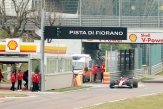
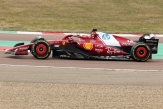
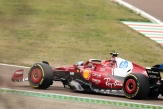
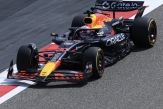
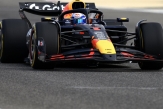
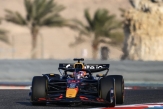

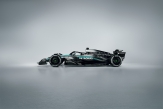
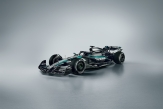
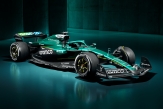
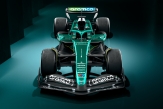
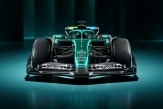
.jpg)
.jpg)
.jpg)

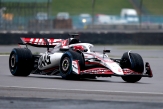

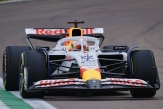
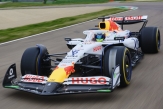



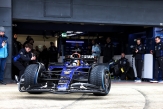
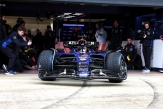
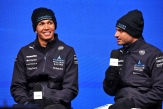

02/12/2025 от Огнян Тенчев (drJeckyll), няма коментари